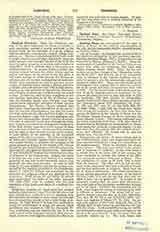

Cardinal Protector. — Since the thirteenth century it has been customary at Rome to confide to some particular cardinal a special solicitude in the Roman Curia for the interests of a given religious order or institute, confraternity, church, college, city, nation, etc. He was its representative or orator when it sought a favor or a privilege, defended it when unjustly accused, and besought the aid of the Holy See when its rights, property, or interests were violated or imperilled. Such a cardinal came to be known as a cardinal protector. In ancient Rome a similar relationship existed between the client (cliens) and his patron (patronus); as the power of the city grew, a still closer analogy is visible between the Roman institution and the modern ecclesiastical protectorate. Nearly every provincial city had its patronus, or procurator, in imperial Rome, usually a Roman patrician or knight, and such persons were held in high esteem. Cicero, e.g., was patronus of Dyrrachium (Durazzo) and of Capua, in which city a gilded statue was raised to him. In time the office became hereditary in certain families; Suetonius, in his life of Tiberius, says that the Claudian family (pens Claudia) was from ancient times (antiquitus) protector of Sicily and the Peloponnesus. The Roman Church adopted this, with many other imperial institutions, as one serviceable for external administration, not that the popes who first conferred this office and title sought to copy an ancient Roman usage, but because analogous conditions and circumstances created a similar situation. The office is conferred by the pope through the secretary of state, sometimes by spontaneous designation of the Holy Father, sometimes at the request of those who seek such protection. Such a cardinal protector had the right to place his coat-of-arms on the church, or main edifice, of the institute, or the municipal palace of the city in question. The first to hold such an office was Cardinal Ugolino Conti (Gregory IX), who sought thereby to paralyze the intrigues of his many enemies at Rome; at the request of St. Francis himself he was named protector of the Franciscans by Innocent III, and again by Honorius III. Alexander IV and Nicholas III retained for themselves the office of protector of the Franciscans. Indeed, the latter were long the only order that boasted of a cardinal protector; it was only in the fourteenth century that gradually the office was extended. As early as 1370 Gregory XI was obliged to restrain the abuses committed by the cardinal protector of the Franciscans; Martin V (1417-31) forbade the acceptance by the protector of a religious order of any payment for his protection. While Sixtus IV and Julius II defined more particularly the limits of the office, Innocent XII (1691-1700) must be credited with the final regulation of the duties and rights of a cardinal protector.
Kingdoms, empires, etc. must have had cardinal protectors previous to Urban VI (1378-89), since that pope forbade such cardinals to receive anything from the respective sovereigns of these states, lest through love of money they should be led to abet works of injustice. In 1424 Martin V forbade the cardinals to accept the protectorate of kings and princes, which prohibition was renewed in 1492 by Alexander VI. This prohibition was not renewed by Leo X in the ninth session of the Lateran Council of 1512; the cardinals, however, were urged to exercise the office in an impartial way and without human respect. At present the only state with a cardinal protector is the Kingdom of Portugal.
U. BENIGNI

